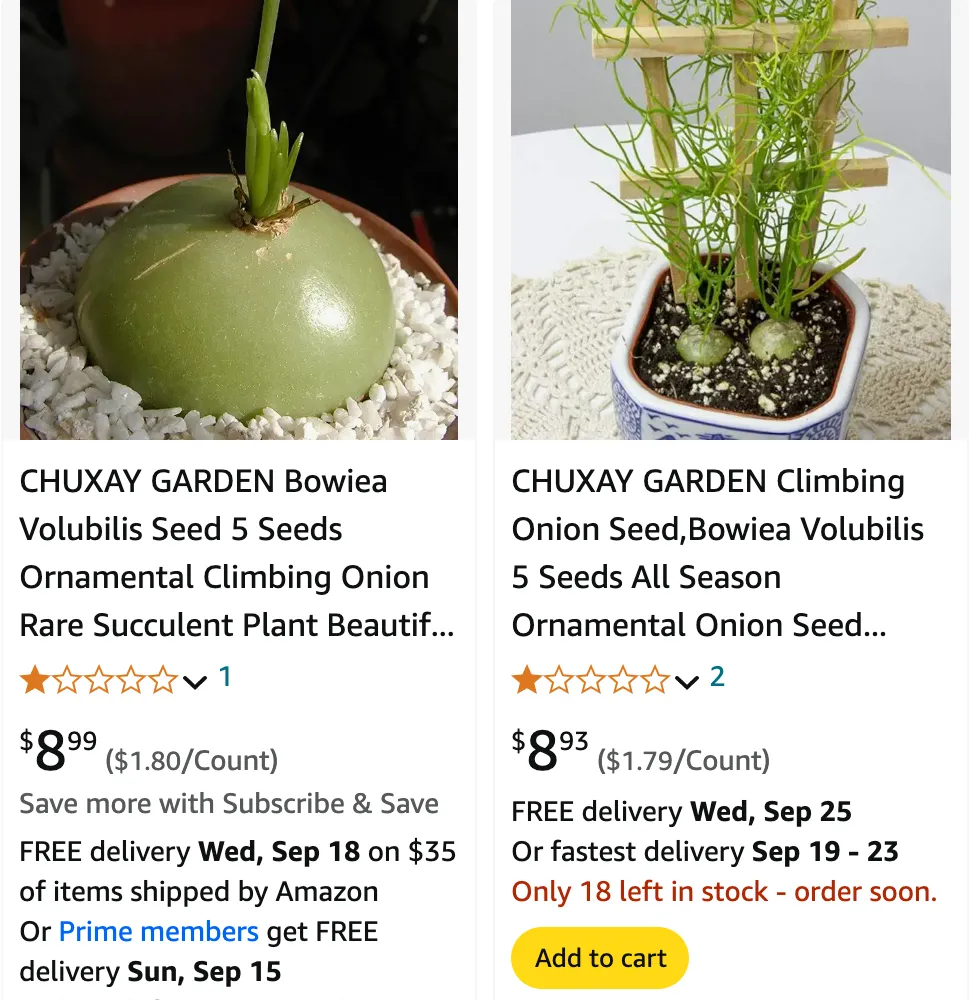
FAQs About Bowiea Volubilis
If you’re into unique and eye-catching plants, Bowiea Volubilis is likely on your radar. This fascinating plant, commonly known as the Climbing Onion or Snake Lily, has a lot to offer gardeners and plant enthusiasts. Here, I’ll answer some of the most frequently asked questions about Bowiea Volubilis, including how to grow, propagate, and care for it.
What Is Bowiea Volubilis?
Bowiea Volubilis is a perennial bulbous plant belong to the Asparagaceae family, native to South Africa. It’s renowned for its unusual climbing habit and striking appearance. The plant features long, slender stems that can reach up to 6 feet in length, which makes it an excellent choice for adding a vertical element to your garden or indoor space. Its green, tubular leaves give it a snake-like appearance, and it produces small, star-shaped flowers that add a subtle touch of charm.
Plant Family: 119 Genera in Asparagaceae
How to Grow Bowiea Volubilis?
Growing Bowiea Volubilis is relatively straightforward if you provide the right conditions. Here’s a step-by-step guide:
- Choosing the Right Location: Bowiea Volubilis thrives in bright, indirect light. While it can tolerate some direct sunlight, too much can scorch its delicate leaves. If growing indoors, place it near a window with filtered light.
- Soil Requirements: Use well-draining soil to prevent waterlogging, which can lead to root rot. A mix of potting soil and sand or perlite works well. If you’re growing it in the garden, ensure the soil is loose and sandy.
- Watering: Water Bowiea Volubilis moderately. Allow the top inch of soil to dry out between waterings. Overwatering can cause the bulb to rot, so it’s better to err on the side of less water.
- Temperature and Humidity: This plant prefers warm temperatures ranging from 60 to 75°F (15 to 24°C). It’s not frost-tolerant, so if you live in a colder climate, consider growing it in a pot that can be moved indoors during winter.
- Fertilizing: Feed the plant with a balanced, water-soluble fertilizer every 4-6 weeks during the growing season (spring and summer). Reduce feeding in the winter months when the plant is dormant.
How to Propagate Bowiea Volubilis?
Propagation of Bowiea Volubilis is typically done through offsets or bulbils. Here’s how you can propagate it:
- Offsets: During the growing season, you may notice small bulbs or offsets forming around the base of the main bulb. Carefully separate these offsets from the parent bulb and plant them in new pots with the same soil mix you use for the main plant.
- Bulbils: These are small bulb-like structures that grow along the stems. Allow them to mature on the plant, then gently remove and plant them in well-draining soil.
- Care for New Plants: Water the newly planted offsets or bulbils lightly and place them in a warm, bright spot. They should start to grow roots and shoots within a few weeks.
How to Care for Bowiea Volubilis?
Caring for Bowiea Volubilis involves a few essential practices:
- Pruning: Trim any dead or damaged leaves to keep the plant healthy and promote new growth.
- Support: As a climbing plant, it benefits from some form of support, such as a trellis or a stake, to help guide its growth.
- Pest Management: Keep an eye out for common pests like spider mites and aphids. Treat infestations with insecticidal soap or neem oil.
Can You Grow Bowiea Volubilis Indoors?
Yes, Bowiea Volubilis can be grown indoors with the right care. Ensure it receives bright, indirect light and maintain a warm, stable temperature. Indoor environments can be ideal for controlling light and temperature, but be cautious of low humidity, which can stress the plant.
Is Bowiea Volubilis Toxic?
Bowiea Volubilis is not known to be toxic to humans or pets. However, as with all plants, it’s best to keep it out of reach of small children and animals to avoid any potential mishaps.
What to Plant with Bowiea Volubilis?
Bowiea Volubilis pairs well with other plants that have similar care requirements. Consider companion plants like:
- Ferns: Their lush foliage complements the delicate appearance of Bowiea Volubilis.
- Succulents: The contrasting textures of succulents and Bowiea Volubilis can create a visually interesting arrangement.
- Orchids: These can add a touch of elegance and thrive in similar light conditions.
Common Problems and Solutions
- Root Rot: Ensure proper drainage and avoid overwatering to prevent root rot.
- Pest Issues: Regularly inspect for pests and treat them promptly with appropriate methods.
- Leaf Drop: If the leaves are dropping, it may be due to insufficient light or overwatering. Adjust care practices accordingly.
How Does Bowiea Volubilis Compare to Similar Plants?
Bowiea Volubilis is often confused with other bulbous plants like the Urginea Maritima (Sea Onion). While both have similar bulbous growth forms, Bowiea Volubilis is distinguished by its climbing habit and the unique appearance of its leaves.
In summary, Bowiea Volubilis is a captivating plant that adds a unique touch to any collection. With the right care and conditions, it can thrive and become a standout feature in your garden or home.
If i die, water my plants!



